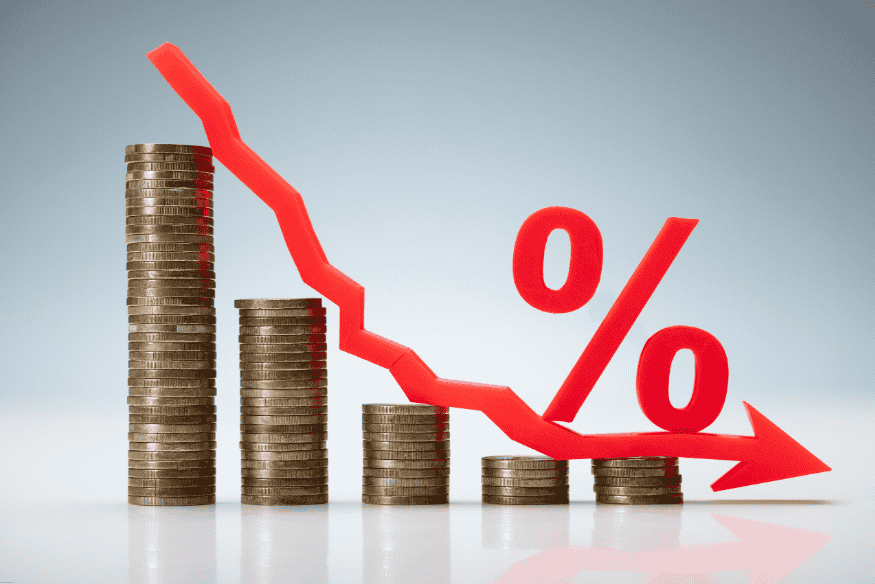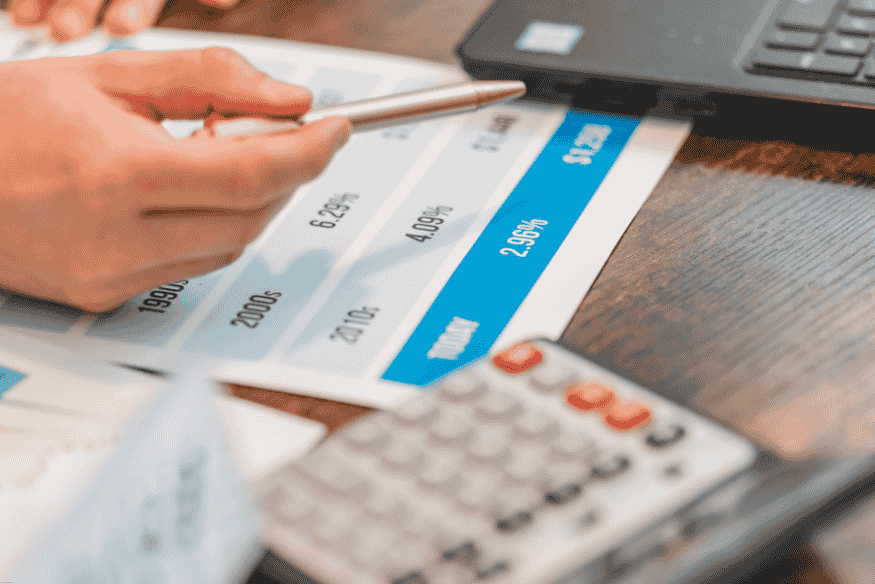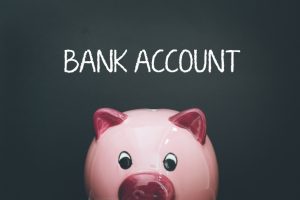Do you know how credit card interest rates impact your money? Credit card companies earn money in two main ways. They charge fees to merchants and interest on your balance.
It’s important to understand APR to handle your credit card debt well. If you don’t clear your balance, interest can pile up. This can hurt your finances a lot.
Key Takeaways
- Credit card companies charge merchants fees for transactions.
- Interest on outstanding balances is a significant source of revenue for credit card companies.
- Understanding APR is key to managing credit card debt.
- Not paying your balance in full can lead to accumulating interest.
- Managing credit card debt requires awareness of interest rates and fees.
Understanding Credit Card Interest Rates
Using a credit card means you’re borrowing money. The cost of this borrowing is the credit card interest rate. This rate is a percentage of your balance charged as interest each year, known as the Annual Percentage Rate (APR).
What Are Credit Card Interest Rates?
Credit card interest rates are the costs of borrowing money from a credit card issuer. They’re applied to your balance if you don’t pay in full each month. This rate can greatly affect what you pay for your purchases.
How Interest Rates Differ from Other Fees
It’s key to know the difference between interest rates and other credit card fees. Interest rates are charged on your balance, while fees are extra charges for certain actions or services.
Annual Percentage Rate (APR) Explained
The APR shows the total cost of borrowing on your credit card over a year. It includes interest and fees. Knowing APR helps you make better choices about using your credit card.
How Credit Card Interest Is Calculated
To understand the cost of your credit card debt, knowing how interest is calculated is key. If you have a balance, the card company adds daily interest to what you owe. This interest is based on a daily rate.
Daily vs. Monthly Interest Calculations
Credit card interest can be figured out daily or monthly. Daily interest calculation means multiplying your balance by the daily rate and compounding it daily. This makes the next day’s interest higher because it’s based on the new balance. On the other hand, monthly interest calculation only applies the rate once a month.
Daily compounding can make your total debt higher than monthly compounding. This is because interest is added more often.
Compound Interest and Its Effects
Compound interest happens when interest is charged on both the principal and any accrued interest. This can quickly increase your debt. It’s important to understand compound interest because it can greatly affect your ability to pay off your credit card balance.
The Minimum Payment Trap
Making only the minimum payment can make paying off your card take longer and cost more in interest. Here’s an example:
| Balance | Interest Rate | Minimum Payment | Payoff Period | Total Interest Paid |
|---|---|---|---|---|
| €1,000 | 20% | €50 | 24 months | €436 |
| €1,000 | 20% | €100 | 12 months | €218 |
The table shows that paying more than the minimum can cut down the payoff period and interest paid.
Factors That Determine Your Credit Card Interest Rates

The interest rate on your credit card isn’t random. It’s shaped by several key factors. Knowing these can help you handle your credit card debt better.
Credit Score Impact
Your credit score is a big deal when it comes to interest rates. A better score means lower rates because you’re seen as less risky. On the flip side, a lower score might mean higher rates or trouble getting a card.
Market Conditions and Central Bank Rates
Market conditions and central bank rates also shape your credit card rates. Central bank changes can affect what credit card companies offer. Things like inflation or recession can also play a part.
Card Type and Provider Policies
The type of card you have and your provider’s policies matter too. Cards with rewards or cashback might have different rates. Providers adjust rates based on their own risk views and business plans.
| Factor | Impact on Interest Rate |
|---|---|
| Credit Score | Higher score = Lower rate |
| Market Conditions | Economic changes affect rates |
| Card Type | Different cards have different rates |
The Real Cost of High Interest Rates
High interest rates can really hurt your wallet, affecting both now and later. If you have a credit card balance, high rates can make things tough. They can strain your finances in the short and long term.
Short-Term Impact on Monthly Finances
High interest rates can quickly increase what you owe on your credit card. This makes it hard to manage your money each month. You’ll have to spend more on debt repayment, which can hurt your budget.
Long-Term Debt Accumulation
Over time, high interest rates can cause debt accumulation. This means your debt grows a lot because of interest. It creates a cycle of debt that’s hard to get out of. Most of your payments go to interest, not the actual debt.
The Snowball Effect of Minimum Payments
Only paying the minimum payments can make your debt worse. High interest rates make this worse. The interest keeps adding up, making it hard to pay off the principal. This extends how long you’ll be in debt.
Knowing the cost of high interest rates is key to handling your credit card debt. By understanding the risks, you can take steps to lessen their impact on your finances.
How Credit Card Interest Rates Affect Your Total Debt
It’s key to know how credit card interest rates impact your debt. When you pay, some goes to interest and some to the principal. This split can greatly affect how long it takes to pay off your debt.
Interest Charges vs. Principal Payments
The split between interest and principal depends on your card’s rate. A higher rate means more interest, which slows down paying off the principal. For example, a $1,000 balance with a 20% rate might see most of your payment go to interest.
Calculating Your Debt Payoff Timeline
To figure out when you’ll pay off your debt, look at the balance and rate. A debt calculator can give you an estimate. For instance, a $2,000 balance at 25% APR with a $50 monthly payment could take over 5 years, costing over $1,500 in interest.
| Balance | APR | Monthly Payment | Payoff Time | Total Interest Paid |
|---|---|---|---|---|
| $1,000 | 20% | $50 | 24 months | $214 |
| $2,000 | 25% | $50 | 62 months | $1,532 |
The True Cost of Your Purchases
Credit card interest rates can make your purchases more expensive. You’re not just paying for what you buy; you’re also paying interest. This can greatly increase the total cost over time.
Knowing how interest rates affect your debt helps you make better choices. It’s about understanding the true cost of your spending and how to manage your debt.
Credit Card Interest Rates in Finland
It’s important for people in Finland to know about credit card interest rates. This knowledge helps them handle their debt better. As of September 2024, the average APR of credit cards was 24.74% globally. But, rates in Finland might be different.
Average Rates in the Finnish Market
The average credit card interest rate in Finland is shaped by the European Central Bank and the competition among Finnish banks. Right now, Finnish banks offer APRs from 12% for some promotional cards to over 25% for regular cards.
Finnish Banking Regulations
Finnish banking rules greatly affect credit card interest rates. The Finnish Financial Supervisory Authority makes sure banks follow rules to protect customers. For example, credit card companies must clearly show interest rates and terms.
Comparison with Other European Countries
Finland’s credit card interest rates are pretty average compared to other European countries. For example, Germany and the Netherlands have lower average APRs. On the other hand, Poland and Hungary have higher rates. This shows how different banking rules and market conditions can be.
In summary, credit card interest rates in Finland are influenced by local banking rules and European trends. But, by understanding these factors, consumers can make smart choices about their credit cards.
Strategies to Reduce Your Interest Burden

To lower your interest burden, you need the right strategies and tools. High-interest rates can make your debt hard to pay off. By using smart tactics, you can cut your interest rates and save money.
Negotiating Lower Rates with Finnish Card Providers
One good way to lower your interest is to negotiate a lower rate with your credit card company. If you’ve always paid on time, you might get a better rate. For tips on getting a lower rate, check out Capital One’s guide. Be ready to talk about your good payment history and loyalty.
Balance Transfer Opportunities in Finland
Balance transfer opportunities are another strategy. Many Finnish credit cards offer deals with 0% interest for a while. This can help you pay off your debt without extra interest. But, watch out for any fees and the rate after the deal ends.
Debt Consolidation Options for Finnish Consumers
Debt consolidation is also a good option. It combines your debts into one loan with a lower rate. This can make your payments easier and save you money. Finnish consumers can look into personal loans or home equity solutions for this.
Personal Loans from Finnish Banks
Finnish banks offer personal loans for consolidating debt. These loans have fixed rates and terms, making it simpler to manage your debt.
Home Equity Solutions Available in Finland
Homeowners can use home equity solutions for consolidation. This uses your home’s equity to get a loan with a lower rate. But, think carefully about the risks, like losing your home if you can’t repay the loan.
Smart Payment Strategies to Minimize Interest Charges
To cut down on interest charges on your credit card, smart payment plans are key. Knowing how to manage your payments can greatly reduce interest over time.
Paying More Than the Minimum
Paying more than the minimum on your credit card bill can significantly shorten your payoff time. This leads to lower interest charges. For example, a $2,000 balance with a 20% APR can take over 5 years to clear with just the minimum payment, costing thousands in interest. But, doubling your monthly payment can cut down the principal and interest paid.
Strategic Payment Timing
When you make your payments can also affect your interest. Paying early in the cycle reduces the balance on which interest is charged, lowering your charges. Some issuers also adjust payment due dates to fit your income, making payments easier to manage.
Snowball vs. Avalanche Debt Repayment Methods
There are two main debt repayment methods: the snowball and avalanche. The snowball method focuses on the smallest balances first, while the avalanche targets the highest interest rates. Here’s a comparison:
| Method | Description | Pros | Cons |
|---|---|---|---|
| Snowball | Pay off cards with smallest balances first | Quick wins, psychological boost | May not be the most cost-effective |
| Avalanche | Pay off cards with highest interest rates first | Reduces total interest paid | May take longer to see progress |
Choosing the right payment strategy can help you pay off your credit card debt efficiently and save on interest.
Finnish Financial Tools and Resources
If you’re dealing with credit card debt, Finland has tools to help. These services can improve your financial management and lower your debt.
Government-Supported Financial Advisory Services
Finland has government-backed financial advice that’s free or cheap. They help you understand your debt and plan to be debt-free. You can check your credit score for free online or from some credit card companies.
Finnish Budgeting Apps and Interest Calculators
Finland has many budgeting apps to track your spending. Apps like Nordea’s Solo and OP’s Pasi help manage your accounts. Interest calculators show how much interest you pay on your debt.
Credit Counseling Options in Finland
For personal help, try credit counseling in Finland. The Finnish Consumer Agency offers counseling to manage your debt. They can help you create a plan to pay off your debt.
Using these Finnish tools, you can manage your credit card debt. This will help you achieve a stable financial future.
When to Consider Alternatives to Credit Cards
If you’re finding it hard to pay off your credit card debt, it’s time to look at other options. Credit cards can be helpful, but their high interest rates can trap you in debt. This can be tough to get out of.
One good choice is personal loans from Finnish institutions. These loans usually have lower interest rates than credit cards. Banks like Nordea and OP offer personal loans with rates that are more favorable. You can use a personal loan to combine your credit card debt into one, lower-interest loan.
Personal Loans from Finnish Institutions
Personal loans can help with debt consolidation, home improvements, or big expenses. They have fixed interest rates and repayment plans. This makes it simpler to plan your monthly payments.
Lines of Credit Available in Finland
A line of credit is another option. It lets you borrow and pay back money as you need it, up to a limit. This is great for managing regular or unexpected costs. Finnish banks offer lines of credit with flexible terms.
Debit Cards and Cash Management Strategies
Using debit cards or cash management strategies can also help avoid credit card debt. Debit cards take money directly from your checking account. This way, you can’t build up debt.
| Financial Tool | Interest Rate | Flexibility |
|---|---|---|
| Personal Loans | Fixed, often lower than credit cards | Fixed repayment term |
| Lines of Credit | Variable, often competitive | Reusable credit limit |
| Debit Cards | No interest rates | Directly linked to your account balance |
Looking at these alternatives can help you make better financial choices. It can also reduce your need for high-interest credit cards.
Conclusion: Taking Control of Your Credit Card Debt

Being smart with your money is crucial to avoid high-interest credit card debt. Paying off your credit card bill in full each month is the best way to avoid big interest charges.
Knowing how credit card interest rates work helps you make better financial choices. This knowledge lets you manage your debt and use your credit cards wisely.
Controlling debt means more than just paying the minimum. It’s about managing your finances well. Using smart payment plans and tools like balance transfers can help reduce your interest and get you out of debt.
In Finland, you have many financial tools and resources to help you reach financial stability. Being proactive and informed can help you handle credit card debt and improve your financial management.









